Guitar capo basics: everything you need to know
How to choose and use this essential guitar accessory
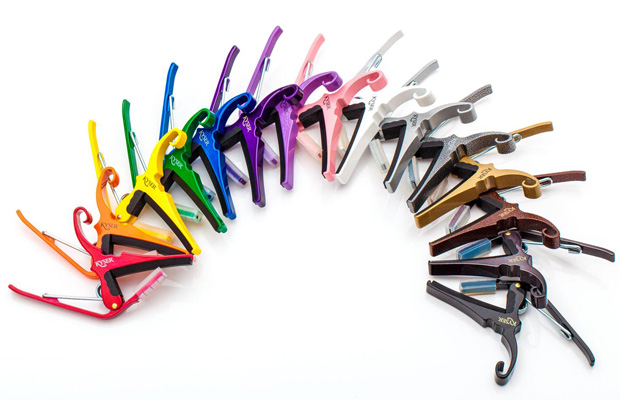
Ah, the capo. That handly little tool that most guitarists carry one or more of with them at all times.
I’ve used a capo lots of times over my career.
Typically for one of two reasons.
I want to play chords that are easier to finger.
And I want to play those chords in a key that hits the sweet spot of my vocal range.
A capo is a great tool to address both of these issues. But let’s dig deeper.
Of course, there are some great guitarists out there that use a capo for reasons other than these. Often, a capo can give you some new tonal variations..
Get The Pick Newsletter
All the latest guitar news, interviews, lessons, reviews, deals and more, direct to your inbox!
Say you have two guitarists in the band. One can be playing the song with a capo so that the strings all sound higher even in the same key, and the fingerings or inversions can be different. This will give a different quality to the performance and enable each instrument to fit into the aural spectrum in its own way.
Choosing a Capo
When you go to choose a capo, make sure it’s one that you can maneuver easily and that clamps evenly across the fretboard. You might want to bring your guitar with you to try it out.
Consider the type of guitar you are playing — acoustic, electric, 12-string or classical. Your choice might be different for each application and neck. There are capos for other instruments, too, like banjo or ukulele.
Also, take a look at your fretboard and determine whether it’s flat or radiused. Pick a capo that fits the flat or curve so that all the strings are clamped down evenly.
Most capos have adjustable tension so that you can get just the right amount of squeeze on your strings.
Most modern capos fall into these categories:
Clutch — this capo clamps onto your guitar’s neck close to the fret.
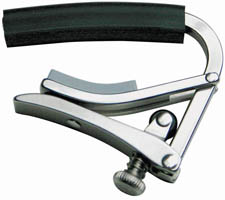
Lever — find the right position and squeeze. This capo will grab onto the neck close to the fret. It’s super easy to use and you can put it on with one hand. It can be knocked loose, though, so don’t get too wild!
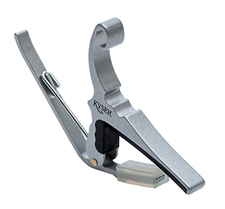
Partial capo — these have a shorter arm for only clamping down some of the strings.
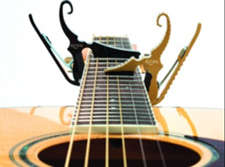
Capos can be used alone or in combinations. I’ve seen folks play with three capos on the neck at once! I’ve also seen a player move the capo in the middle of the song.
More About Partial Capos
You can use a partial capo to change the pitch of only some of the strings, again altering the sonic landscape and providing new tone possibilities and combinations.
One style of partial capoing sounds similar to Drop D tuning (when the lowest string, E, is dropped a whole step to D). For this sound, capo all strings but the lowest, and play most chords as you normally would. You’ll notice that chords that use the sixth string will sound different because that string will be a whole step lower compared with standard tuning intervals.
There are loads of other options. Try placing the partial capo like the Kyser Short-cut over the ADG strings to produce a sound similar to DADGAD tuning. Many guitarists refer to this technique as “artificial DADGAD.”
The drone of the open lowest string characterizes DADGAD tuning. Using a partial capo without retuning the strings, the notes are EBEABE — the same intervals and mood as DADGAD, but transposed up a whole step.
Capo Cautions
There are a few things to think about when you use a capo.
Make sure the capo doesn't bend your strings when you clamp it on, as this will make your guitar sound out of tune. You may want to tune again after you put the capo on.
Capos can get in the way of your fretting hand — check to be sure whatever capo you choose doesn't interfere with your technique.
And pay close attention to the points of contact between the capo and the guitar — you don't want your fretboard scratched.
You can get started with a relatively inexpensive capo, like the Kyser Quick Change, for about $24.95. Give it a whirl and you’ll see using a capo opens a myriad of possibilities!
Laura B. Whitmore is a music industry marketing veteran, music journalist and editor, writing for Parade.com, Guitar World, and others. She has interviewed hundreds of musicians and hosts the She Rocks Podcast. As the founder of the Women’s International Music Network, she advocates for women in the music industry and produces the annual She Rocks Awards. She is the Senior Vice President of Marketing for Positive Grid, making the world safe for guitar exploration everywhere! A guitarist and singer/songwriter, Laura is currently co-writing an album of pop songs that empower and energize girls.
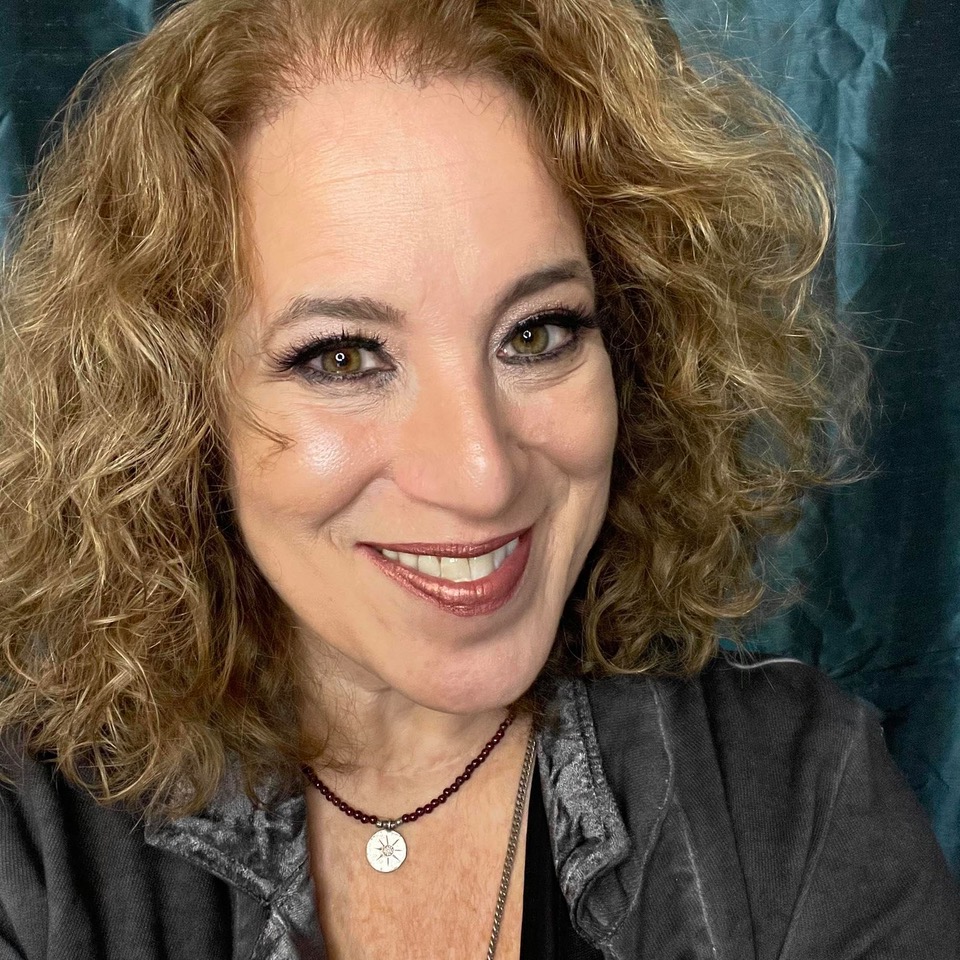








![[from left] George Harrison with his Gretsch Country Gentleman, Norman Harris of Norman's Rare Guitars holds a gold-top Les Paul, John Fogerty with his legendary 1969 Rickenbacker](https://cdn.mos.cms.futurecdn.net/TuH3nuhn9etqjdn5sy4ntW.jpg)
